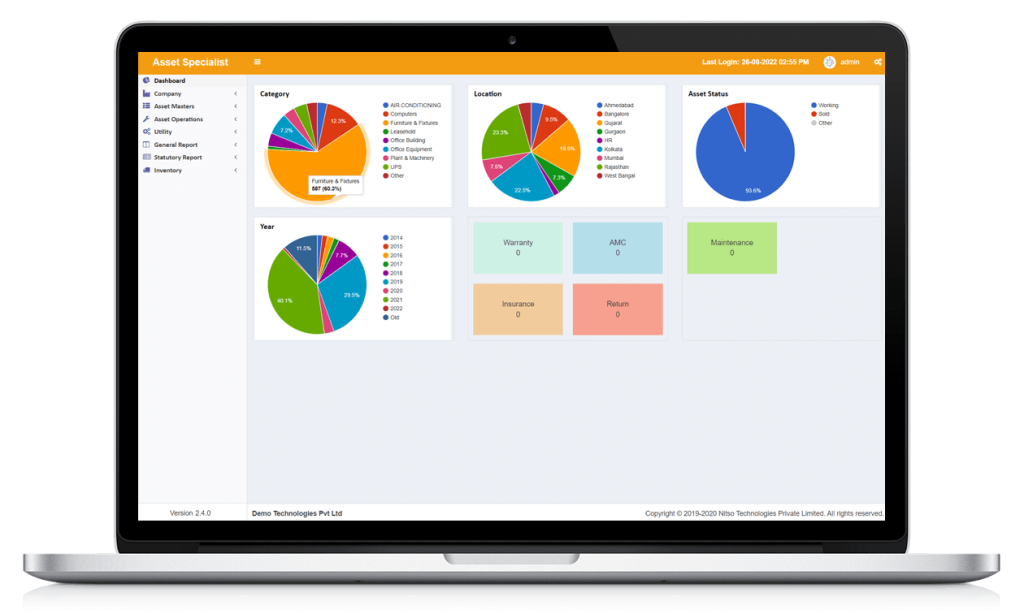- Depreciation calculation in accordance with the New Companies Act of 2013.
- Depreciation aligned with the provisions of the Income Tax Act of 1961.
- Multi-shift depreciation capability.
- IFRS compliance with support for US-based MACRS depreciation.
- Ability to create additional user-defined depreciation books.
- Custom report creation using the Report Builder feature.
- Asset AMC/Warranty/Insurance tracking with the ability to attach scan documents.
- Attachment of asset images, purchase orders, vendor invoices, and other documents to assets.
- Sale/Discard of assets with an approval process, enabling monitoring of any profit or loss.
- User-defined email alerts for reminders on pending activities.
- Complete web-based solution with on-cloud support.
- Support multi-location operations.
- Asset tagging options include Barcode/QR Codes/RFID/GPS.
- Rapid deployment with minimal associated costs.
































